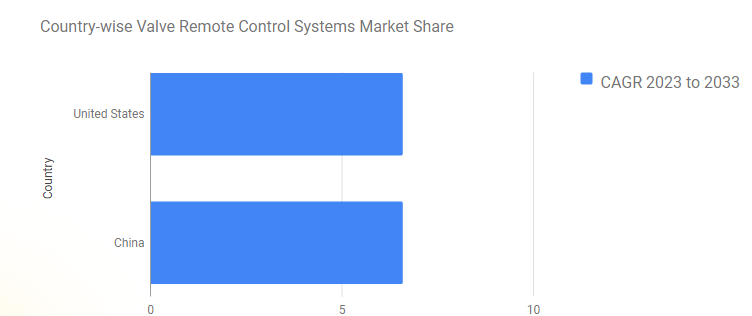Imagine industrial facilities where valves are no longer manually operated, replaced by a centralized control system accessible from a remote location. This vision is becoming reality thanks to valve remote control systems, a rapidly growing market segment within the industrial automation landscape. Let’s explore the diverse applications of these systems and delve into the exciting opportunities propelling this market forward.
Steering the Flow: Applications of Valve Remote Control Systems
Valve remote control systems offer a range of functionalities across various industries:
- Enhanced Safety and Efficiency in Hazardous Environments: In oil and gas refineries, chemical plants, and nuclear facilities, remote control allows operators to manage valves from a safe distance, minimizing exposure to hazardous materials or environments. This improves safety and efficiency by reducing the need for personnel to physically access potentially risky locations.
- Centralized Control for Large-Scale Operations: In sprawling industrial facilities or across geographically dispersed pipelines, remote control systems enable centralized monitoring and operation of valves. This streamlines operations, improves response times, and optimizes overall process control.
- Integration with Automation Systems: Valve remote control systems integrate seamlessly with industrial automation systems (IAS) and Supervisory Control and Data Acquisition (SCADA) systems. This allows for real-time data collection, automated valve actuation based on process parameters, and improved decision-making for optimizing production processes.
- Improved Maintenance and Diagnostics: Remote monitoring capabilities of these systems enable early detection of potential valve issues. Predictive maintenance practices can be implemented, preventing equipment failures and costly downtime.
- Environmental Applications: In wastewater treatment plants and water distribution systems, remote control facilitates precise valve adjustments for flow control and pressure regulation, optimizing resource management and environmental impact.
Get Exclusive Sample Copy of the Report: https://www.futuremarketinsights.com/reports/sample/rep-gb-17519
A Market Poised for Expansion: Opportunities on the Horizon
The valve remote control systems market is brimming with exciting opportunities:
- Rising Demand for Industrial Automation: The growing adoption of industrial automation across various sectors is driving the need for remote control solutions to manage valves within automated processes.
- Focus on Process Optimization and Efficiency: Industries are increasingly focused on optimizing production processes and achieving greater efficiency. Remote control systems offer precise control over valve operations, contributing to these goals.
- Stringent Safety Regulations: Stricter regulations regarding safety in hazardous industrial environments are propelling the adoption of remote control systems, minimizing worker exposure to risks.
- Advancements in Wireless Technologies: Developments in wireless communication technologies like Industrial Internet of Things (IIoT) are enabling more efficient and reliable data transmission between valves and control centers, facilitating remote operation.
- Growing Demand for Cybersecurity Solutions: As remote control systems become more prevalent, the need for robust cybersecurity measures to protect against cyberattacks is becoming crucial. This presents an opportunity for integrated security solutions within these systems.
The valve remote control systems market is likely to soar at 6.7 % CAGR between 2023 and 2033, says Future Market Insights (FMI). Sales are estimated to exceed USD 7.9 billion in 2023 and a further USD 15.1 billion by the end of 2033. The market for valve remote control systems reached US$ 7.4 billion in 2022.

Challenges and Considerations
While offering significant advantages, valve remote control systems also present some challenges:
- Initial Investment Costs: Implementing a remote control system can involve a higher initial investment compared to traditional manual valve operation. However, the long-term benefits in terms of safety, efficiency, and maintenance cost savings can outweigh the upfront expense.
- System Complexity: Depending on the application, remote control systems can involve complex configurations with various components. Skilled personnel are needed for system design, installation, and maintenance.
- Reliance on Communication Infrastructure: The effectiveness of remote control systems hinges on reliable communication infrastructure. Addressing potential disruptions or signal interference is crucial.
Get Full Report Now: https://www.futuremarketinsights.com/checkout/17519
